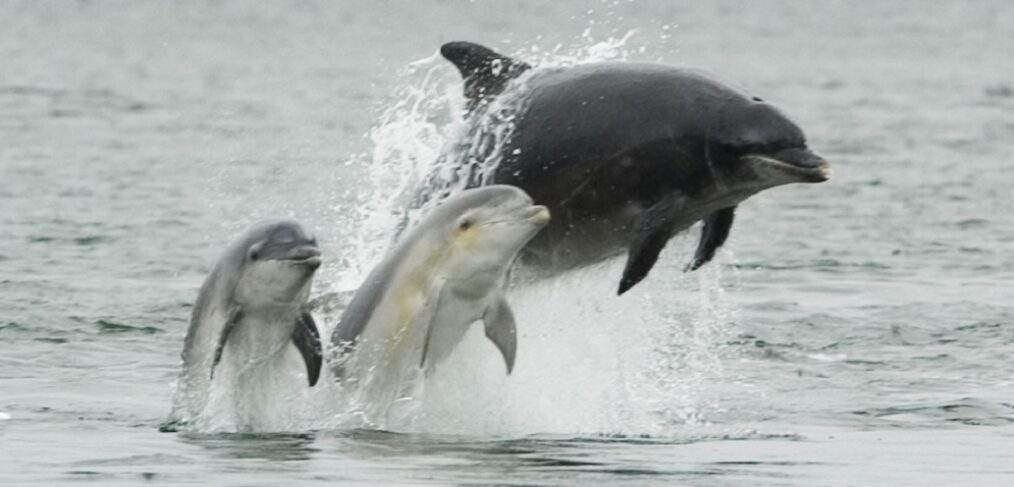
species of the week #80 – Atlantic bottlenose dolphin
Did you know that there were still dolphins in the German Bay until the 1970s? Thanks to Flipper, the bottlenose dolphin is the best-known dolphin species. It is found in various subspecies in almost all the world’s oceans and used to be at home on German coasts. Bottlenose dolphins are considered the most robust dolphins, but in the middle of the last century the influence of human use in the German Bight became too great and the bottlenose dolphin is no longer native there.
| Distribution status | extinct |
| Remaining deposits | North Sea off Scotland, Atlantic Ocean |
| Last sighting in Germany | 1970 |
| Habitat | Coasts and deep sea areas |
| Threat | Lack of food, water pollutants, construction, bycatch |
People are often fascinated by the social nature and intelligence of bottlenose dolphins. But the fascination seems to be the same with dolphins. Curious individual animals sometimes actively seek the company of humans for long periods of time and enjoy solving tasks for them. Unfortunately, this is why they are also used in the military to detect sea mines.
Bottlenose dolphins have developed two different phenotypes. In the North Sea today, only the coastal form seems to occur, which usually lives close to the coast and relatively loyal to its location in relatively small groups. According to observations by researchers at the University of Los Angeles, the mother does not sleep at all for up to two weeks after giving birth. The calf also stays awake continuously during this time, but this lack of sleep does not weaken it; on the contrary, it gains weight. Afterwards, the mother and her calf experience short periods of sleep, but the mother does not reach normal sleep duration until after a few more weeks. Then the grandparents also take over the supervision of the young animal when the mother is out foraging.
In a 2005 study, researchers from the University of Zurich and the University of New South Wales (Sydney) reported that some bottlenose dolphins in Shark Bay, Western Australia, use tools when foraging: They detach sponges from the seabed and put them over their snouts. The sponges serve as a kind of glove to protect the snout when foraging on the bottom. But not all dolphins in Shark Bay use this technique. To investigate the genetic influence, the DNA of 13 sponge-using dolphins was analysed, as well as the DNA of 172 dolphins that do not use sponges. It was found that sponge use appears to be passed directly from mother to offspring. The sponge-using animals showed a high genetic relatedness. Another study by the Royal Society found that the use of the technique provided a significant survival advantage. The researchers hypothesise that the use of sponges was invented by a female ancestor relatively recently. It is the first example of material culture in marine mammals
Today, the bottlenose dolphin is only a very rare guest in the German Bight; there are no longer any permanent settlements. The reasons for this are presumably the building up of the coast and the capping of migration possibilities for fish. For example, the bottlenose dolphins in the Dutch Marsdiep did not appear after previous dyking had brought the spring migration of the herring to a standstill.
The discharge of heavy metals and persistent organic toxins such as polychlorinated biphenyls (PCBs) or flame retardants (HBCD) lead to an accumulation of these substances in the fatty tissue of the relatively long-lived bottlenose dolphins and result in reduced reproductive success and weakened immune defences.
Click here for more exciting species of the week
Image: By Peter Asprey, http://www.peter-asprey.com/ – Cropped version of a picture from the English Wikipedia, http://en.wikipedia.org/wiki/Image:2005-05-n2-001-3118.jpg, CC BY-SA 3.0, https://commons.wikimedia.org/w/index.php?curid=1962216
